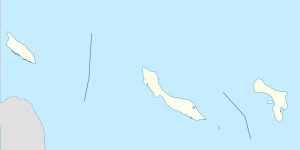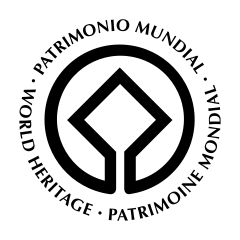List of World Heritage Sites in the Netherlands
This is a list of World Heritage Sites in the Netherlands with properties of cultural and natural heritage in the Netherlands as inscribed in UNESCO's World Heritage List or as on the country's tentative list.[1] The Netherlands, with an extension to Curaçao,[note 1] accepted the Convention Concerning the Protection of the World Cultural and Natural Heritage on 26 August 1992, after which it could nominate properties on their territory to be considered for the World Heritage List.[2]
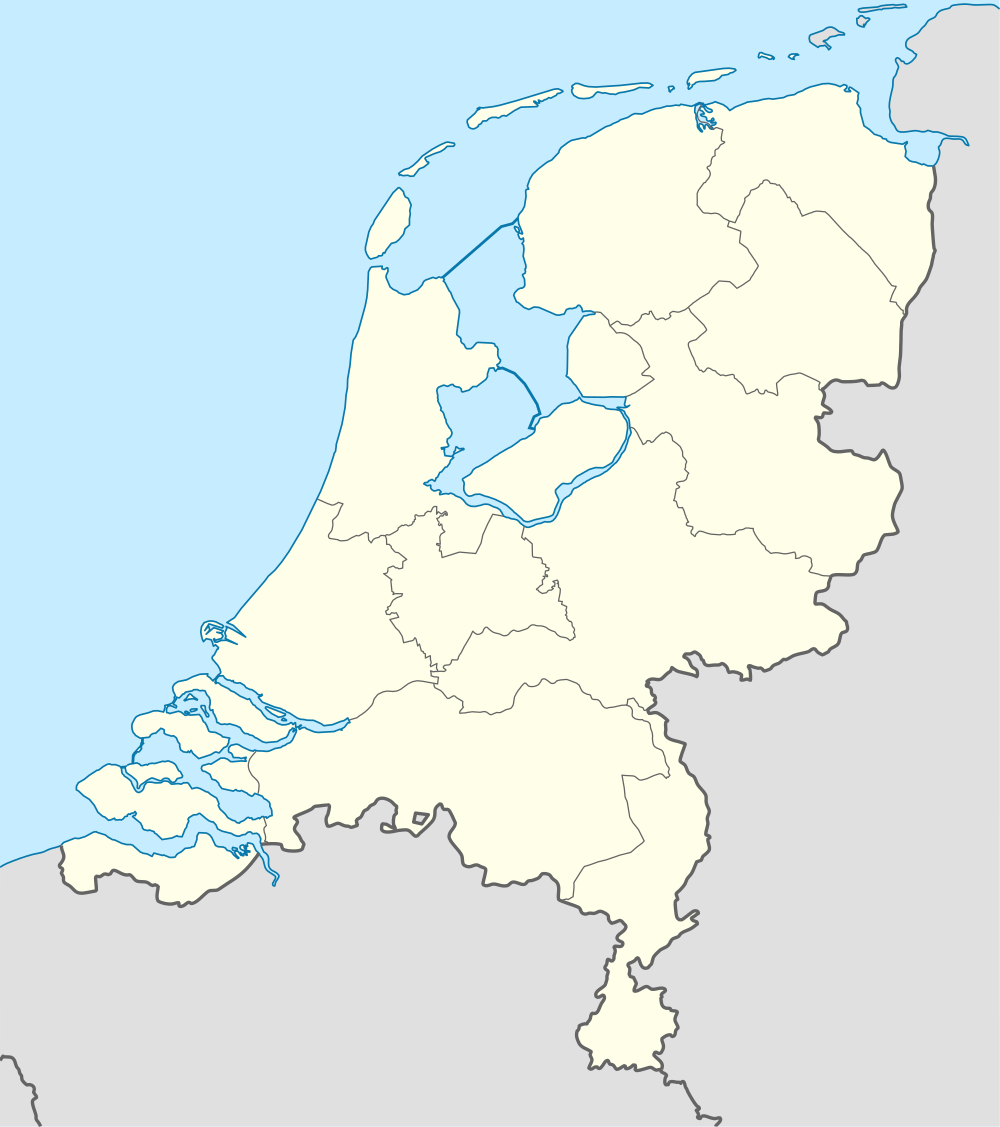
Currently, 10 properties in the Netherlands and Curaçao are inscribed on the World Heritage List. Nine of these are cultural properties and one is a natural property.[1] The first was added to the list in 1995 and the latest in 2014. Eight properties are in the Netherlands, one is in Curaçao, and one is in both the Netherlands and Germany. The tentative list of the Netherlands contains eight properties, all of which were submitted on 17 August 2011.[1]
The names in the tables below are the names of the properties as used on the website of UNESCO.[1] There are three different types of properties possible: cultural, natural, and mixed.[note 2] Selection criteria i, ii, iii, iv, v, and vi are the cultural criteria, and selection criteria vii, viii, ix, and x are the natural criteria.[3] The years for the properties on the World Heritage List are the years of inscription, the years for the tentative list are those of submission. The numbers are the reference numbers as used by UNESCO, and they link directly to the description pages of the properties on the UNESCO website.[1]
World Heritage Sites
UNESCO lists sites under ten criteria; each entry must meet at least one of the criteria. Criteria i through vi are cultural, whereas vii through x are natural.[4]
| Site | Image | Location | Year listed | UNESCO data | Description |
|---|---|---|---|---|---|
| Schokland and Surroundings |  |
Noordoostpolder, Flevoland | 1995 | Cultural (iii, v) | Schokland symbolizes the struggle of the people of the Netherlands against the sea. It was an inhabited peninsula since pre-historic times, it became an island in the 15th century, until it was completely encroached by the Zuiderzee in 1859. In the 1940s the Noordoostpolder was created and consequently Schokland was reclaimed.[5] |
| Defence Line of Amsterdam | 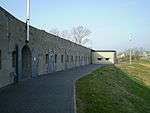 |
North Holland and Utrecht | 1996 | Cultural (ii, iv, v) | The defence line around the Dutch capital Amsterdam was built between 1883 and 1920. It is the only fortification that is based on the principle of controlling the waters around a city. It contains a network of 45 armed forts and can temporarily flood polders extending 135 kilometers around Amsterdam.[6] |
| Mill Network at Kinderdijk-Elshout | Alblasserdam and Nieuw-Lekkerland, South Holland | 1997 | Cultural (i, ii, iv) | ||
| Historic Area of Willemstad, Inner City and Harbour, Curaçao | 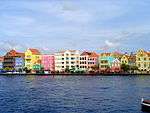 |
Willemstad, Curaçao[note 3] | 1997 | Cultural (ii, iv, v) | |
| Ir.D.F. Woudagemaal (D.F. Wouda Steam Pumping Station) |  |
Lemmer, Lemsterland, Friesland | 1998 | Cultural (i, ii, iv) | |
| Droogmakerij de Beemster (Beemster Polder) |  |
Beemster, North Holland | 1999 | Cultural (i, ii, iv) | |
| Rietveld Schröderhuis (Rietveld Schröder House) | Utrecht, Utrecht | 2000 | Cultural (i, ii) | ||
| The Wadden Sea |  |
Friesland, Groningen, and North Holland | 2009 | Natural (viii, ix, x) | |
| Seventeenth-century canal ring area of Amsterdam inside the Singelgracht | 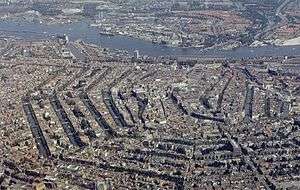 |
Amsterdam, North Holland | 2010 | Cultural (i, ii, iv) | |
| Van Nelle Factory | 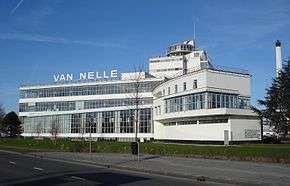 |
Rotterdam, South Holland | 2014 | Cultural (ii, iv) |
Tentative list
In addition to sites inscribed on the World Heritage list, member states can maintain a list of tentative sites that they may consider for nomination. Nominations for the World Heritage list are only accepted if the site was previously listed on the tentative list.[7] As of 2020, the Netherlands has recorded six sites on its tentative list.[8]
| Site | Image | Location | Year listed | UNESCO criteria | Description |
|---|---|---|---|---|---|
| Bonaire Marine Park | 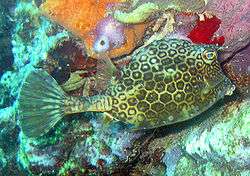 |
Bonaire, Caribbean Netherlands[note 4] | 2011 | Natural (vii, viii, ix, x) | |
| Eise Eisinga Planetarium | Franeker, Friesland | 2011 | Cultural (vii, viii, ix, x) | ||
| Koloniën van Weldadigheid (agricultural pauper colony) |  |
Veenhuizen, Noordenveld, Drenthe, | 2011 | Cultural (vii, viii, ix, x) | |
| Nieuwe Hollandse Waterlinie | Gelderland, North Brabant, North Holland, South Holland, and Utrecht | 2011 | Natural (vii, viii, ix, x) | ||
| Plantations in West Curaçao | Curaçao[note 3] | 2011 | Cultural (vii, viii, ix, x) | ||
| Frontiers of the Roman Empire (extension) | 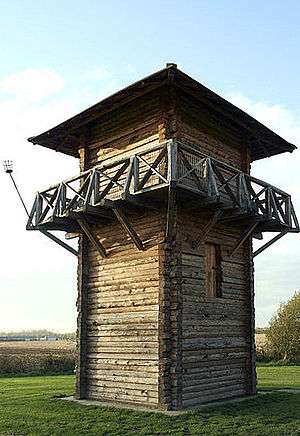 |
Gelderland, South Holland, and Utrecht | 2011 | Cultural (vii, viii, ix, x) |
See also
- List of World Heritage Sites in Europe
Notes
- The Netherlands and Curaçao are both constituent countries of the Kingdom of the Netherlands.
- There are no mixed properties in the Netherlands and Curaçao on the World Heritage List or on the country's tentative list.
- Curaçao is a constitute country of the Kingdom of the Netherlands in the Caribbean.
- Bonaire is a special municipality of the Netherlands located in the Caribbean.
References
- Netherlands. UNESCO World Heritage Centre. Retrieved on 2012-01-21.
- State Parties. UNESCO World Heritage Centre. Retrieved on 2012-01-21.
- The Criteria. UNESCO World Heritage Centre. Retrieved on 2009-07-23.
- "UNESCO World Heritage Centre – The Criteria for Selection". UNESCO World Heritage Centre. Archived from the original on 12 June 2016. Retrieved 17 August 2018.
- Schokland and Surroundings. UNESCO World Heritage Centre. Retrieved on 2012-01-22.
- Defence Line of Amsterdam. UNESCO World Heritage Centre. Retrieved on 2012-01-22.
- "Tentative Lists". UNESCO World Heritage Centre. Retrieved July 12, 2014.
- "UNESCO World Heritage Centre – Tentative Lists: the Netherlands". UNESCO World Heritage Centre. Retrieved 19 January 2020.
